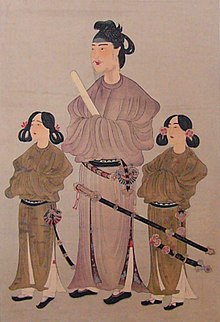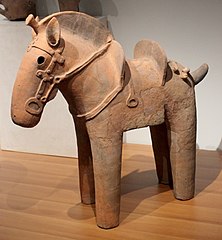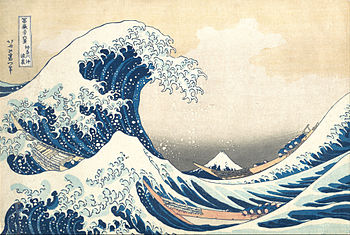East Asian Studies Midterm
1/109
There's no tags or description
Looks like no tags are added yet.
Name | Mastery | Learn | Test | Matching | Spaced |
|---|
No study sessions yet.
110 Terms
In what year was the Korean Peninsula split between North Korea and South Korea?
1953
The geographic area of China is 10 times that of Japan.
False
How does the World Factbook website describe the terrain of North Korea?
Mostly hills and mountains separated by deep, narrow valleys
The World Factbook website notes that South Korea is "slightly smaller" than which state?
Pennsylvania
How does the World Factbook describe the government of North Korea?
Dictatorship, single-party state
Scholars disagree on the definition of "culture."
True
Order the countries according to their tallest mountain peak. (1 is tallest)
China
Japan
North Korea
South Korea
Which of the following will we be covering in this course? Check all that apply.
yes | Legal systems |
yes | Philosophical and Religious Traditions |
yes | Language and Literature |
yes | Technological breakthroughs |
yes | Social Structure |
yes | Artistic Expression |
Which is the only country that has a positive migration rate?
| |
The World Factbook website notes that Japan is "slightly smaller" than which state?
California
The earliest form of Chinese writing was found on
oracle bones
Which of the following is NOT a traditional family festival?
Children’s Day
Chinese (Sinitic) languages are all tonal
True
Which of the following Chinese dialects represents the largest group?
Mandarin
Modern Standard Chinese is based on which dialect?
Beijing
What is a concubine in the Chinese context?
A woman who lives with a man and his wife, whose purpose is to produce children
What coheres the Chinese and East Asian cultures through time (history) and space (regions)?
Chinese writing
The spoken varieties of Chinese are mutually intelligible to their respective speakers.
False
Cantonese has approximately half as many syllables as Modern Standard Chinese.
False
More people speak a variety of Chinese as a native language than any other language in the world.
True
What is the correct grammatical order in Korean syntax?
Subject
Object
Verb
What archeological item led scholars to conclude that there were two distinct cultures in pre-historic Korea?
Pottery
Which of the following is NOT a characteristic of the Japanese language?
Its nouns are either feminine or masculine
What were King Sejong's main motives in the invention of Hunmin Chǒng-ǔm, the Korean script system (see Figure 1 above), in the 15th century? Check all that apply from below:
Sejong sought to promote greater cultural integration between the Chinese and Korean language systems.
Sejong wanted a phonetic Korean script that correctly represented the spoken language associated with Chinese characters already in use.
Sejong wanted a Korean script that more closely resembled the Japanese writing system and Japanese phonetics
Sejong wanted to provide the Korean people with a written means of expression without reliance on the highly complex use of Chinese characters.
(check all of them)
More than three million ethnic Koreans live outside of Korea.
True
From the list below, what does Korean have in common with Japanese? Mark all that apply.
Free word order
A fully phonetic writing system
Honorific language
Particles
Which language family does Japanese belong to?
A. Sinic
B. Semitic
C.Austronesian
D. None of the above (right answer)
According to the lecture on Korean people, in which decade did rapid industrialization and urbanization begin in South Korea?
1960s
Based on Professor Byon's lecture on Korean language, which of the following statements best explains why dialects were differentiated in Korea?
The mountainous terrain of the peninsula contributed to the development of regional dialects.
What aspect of traditional Korean heritage has most influenced the high value ascribed to education in Korea, also known as "education fever"?
Confucianism
The Qing Dynasty marked rule by the ______________.
Manchus
How much longer did the Han Dynasty (collectively the Western and Eastern Han) last than the Qin Dynasty?
Twenty times as long
The origins of the Han Chinese people can be traced to
The Yellow River valley
When was the writing system standardized?
Qin dynasty
Which of the following did the state NOT carry out in the Han Dynasty?
Matrilineal imperial inheritance
In pre-modern China, eunuchs were a fundamental part of the monarchy
True
The figures below demonstrate that _________ became established in China during the Period of Disunion (white/brown statues w/ their tiddies out)
Buddhism
What was the Qin attitude toward Confucianism?
Hostile
Civil service examinations for Chinese officials began in which dynasty?
Tang
Which of the following Neolithic culture is regarded as an origin of the main Chinese civilization?
Longshan
The emergence of a Japanese civilization happens during which Chinese Dynasty?
Han
In what year did Japan take over Taiwan?
1895
In what period do we see the first rise of the samurai?
Kamakura
The shift from Heian to Kamakura is best described as _________.
Imperial rule to military rule
What is a "shogun"?
A military leader

What is this man known for?
Introducing Confucianism and Buddhism to Japan

What is the item pictured here?
A figurine from a tomb
When was the "closed country policy" adopted?
The Tokugawa Period

When was the image below created?
The Tokugawa Period
What is the Japanese "Diet"?
The Parliament
Which statement(s) below accurately characterize Buddhism during the Unified Silla period? Mark all that apply.
Buddhism flourished in culture and art - had X
Buddhism shared close relations with the state.
Kings promoted Buddhism as protection from foreign invaders
Buddhism was shunned by the elites
Without ________, one could not hold an official position in early Korea.
Noble birth
What does the myth of Tangun explain?
The origins of the Korean people
Which of the following were "Northern Invaders" of the Korean Peninsula? Check all that apply.
yes | Khitans |
yes | Mongols |
yes | Japanese |
yes | Tibetans |
Which political entities were formed in the Korean peninsula prior to the Three Kingdoms period?
Confederation of tribal communities
Which of the following best describes Korean society during the Three Kingdoms Period?
Rigidly stratified
Who invaded Korea in the 17th century?
The Manchurians
Based on the assigned reading, how did tributary (suzerain-vassal) relations work between the Three Kingdoms and the Chinese dynasties? Mark all that apply.
(check all) | The tributary relations served as important conduits for the diplomatic and cultural contact between China and Korea. |
The tributary relations with China were actively opposed by the Korean monarchs, who refused to pay tribute to the Chinese emperors. | |
The tributary relations mostly benefited both sides. | |
The tributary relations involved Chinese emperor's formal recognition of the Korean kings. |
What were the notable cultural products of the Koryŏ era? Check all that apply.
check all | Bronze metalurgy |
Hangul script | |
Moveable type | |
The Tripitaka Koreana | |
Celadon pottery |
When was Korea first fully united?
10th century
How do Chinese "send" things to their ancestors?
By burning them
Which of the following allocated major roles to women?
Daosim
James Robson considers Daoism to be the "Unofficial High Religion of China"
True
In essence, Daoism deals with
Cosmology
What is the Daoist attitude toward sponteneity?
Positive
A Daoist temple might feature deities identified with Buddhism and popular religions.
True
Which of the phenomena below are associated with Yang (as in the Yin-Yang cosmology)? (Mark all that apply)
check all | The moon |
Brightness | |
Men | |
Moisture |
Which of the following is not a Daoist religious tradition?
The Analects Tradition
The Chinese worshipped their ancestors at all of the following venues EXCEPT for
Ancestor's favorite temple
Which of the below could be members of the Daoist pantheon?
Immortals | |
Laozi | |
The Jade Emperor | |
check this one | All of the above |
The Sea Goddess |
What is a "Shaman" in the Korean context?
A person who connects the heavens and earth
What word typically is used in English to refer to Shinto centers?
shrine
Possible containers for kami include which of the following? Check all that apply.
check all of them | Cherry Blossom Trees |
Bronze vases | |
Waterfalls | |
Coins | |
The Sun | |
Ancestors | |
Trees | |
Mt. Fuji |
What are the characteristics of the kami, according to the Kojiki and the Nihon shoki? Check all that apply.
yes | They have a duty to the people around them. |
yes | Only shamans can interact with them |
yes | They are of two minds. |
yes | They are mobile |
yes | They are not visible to humans |
no | They are wrathful |
yes | Their power waxes and wanes with the seasons |
According to Sohn, which of the following is NOT a type of personal kut in Korean Shamanism?
death
According to the Kojiki and the Nihon shoki, why was the first child of Izanami and Izanagi a "leech child"?
Because Izanami had spoken first when they met
What do the Kojiki and Nihongi contain? Check all that apply.
yes | Chronicles |
yes | Myths |
yes | Sutra |
no | Cosmology |
What are the origins of the Kojiki and the Nihon Shoki?
What are the origins of the Kojiki and the Nihon Shoki?
According to Sohn, what happened to Daoism during the Chosŏn dynasty?
It was suppressed by the Confucians
Shintoism is linked with what crop?
rice
Which of the following was Neo-Confucianism responding to through creating a system of metaphysics?
Buddhism
Confucius was born in which state?
Lu
The amount of time between the age of Confucius and the age of Neo-Confucianism was approximately _______.
15 centuries
The Analects was written by Confucius.
False - was written by his disciples
According to Gardner, for Confucius, all that is necessary for good government is ________________.
Moral leadership
According to Daniel Gardner, "ren" (benevolence) which he translates as "true goodness", must be accompanied by what, to be given meaningful expression?
The practice of ritual
Neo-Confucianism broke entirely with Confucianism of the past.
False
What best describes Confucius during the earliest part of his career?
A government official
How did Confucius feel about ritual, according to Gardner?
He gave it the utmost importance
The presence of Confucianism is one of the major definers of East Asian cultures. What are the other two?
check all | Practiced boot-binding |
Wrote with Chinese characters | |
Practiced Buddhism | |
Samurai culture |
What did the Tokugawa shogun do in the early 17th century to help promote Confucianism (according to the reading)?
Bought land on which to establish Confucian schools
Based on your reading, during the Tokugawa Period, the number of Confucian schools _____________.
Increased
Japan in the 21st century has seen a resurgence of private Confucian academies, much like existed in the Tokugawa Period.
False
According to Warren, Ohashi Junzo criticized Westerners for doing what?
Studying the stars in a scientific manner
Since social hierarchies were abolished after the Tokugawa, in modern Japan social hierarchy has more or less been eliminated.
False
Western Learning did not pose a credible threat to Confucianism in the late Tokugawa Period, according to Warren.
False
By the end of the Meiji Period, Confucianism had emerged as the official doctrine of the Japanese government (based on your reading).
False
Who was largely responsible for the survival of Confucianism during the Heian and Kamakura periods, according to Warren?
Buddhist priests
Which Confucian virtues are promoted in "The Fundamentals of Our National Polity"? Check all that apply.
check all | Reciprocity |
Filial piety | |
Loyalty | |
Benevolence | |
Propriety |
Warren writes about Anti-Western Confucian scholars in the late Tokugawa that included a man named Toin. In part what did he argue?
That the Western alphabet was ugly